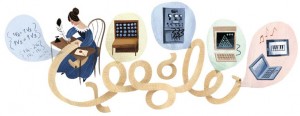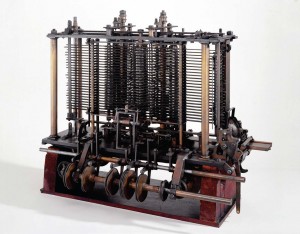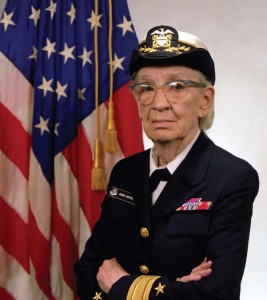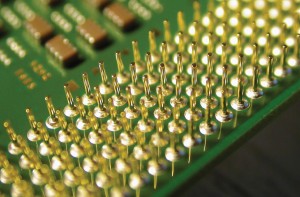MONDAY, 3 FEBRUARY 2014
There are a handful of well-known female scientists most of us will have heard of, including Marie Curie, Dorothy Hodgkin, and Florence Nightingale, all of whom contributed enormously to science and medicine today. But what about the unsung, female pioneers of computer science? Computer science, and science in general, is an area commonly considered to be dominated by men. But its technology is used by an enormous proportion of the whole population every day. What would we do without our laptops? The Internet? Or, God forbid, our smartphones? Computing technology has exploded over the last century to the point where many of us cannot comprehend life without it. Some people may be surprised to learn that a number of inspirational female scientists played their part in this story.The only legitimate daughter of poet Lord Byron, Ada Lovelace, was nudged into a career in mathematics by her mother – whom Byron left when Ada was only a month old. Ada’s mother, bitter about Byron’s betrayal, deliberately steered Ada away from the arts. Little did she know how this fork in the road would influence life today.
Lovelace met Charles Babbage, a famous Cambridge mathematician, in 1833, and a fruitful friendship blossomed. Charles asked her to translate from French into English an article on the Analytical Engine, a theoretical ‘clockwork computer’, he was working on. At a time when women were not admitted to University (Girton College for women was only established in 1869) Lovelace was a keen mathematician, and she was daring enough to add some ideas of her own. Buried among them, in ‘Note G’, was an algorithm that would allow the Analytical Engine to compute a complex series of numbers: the Bernoulli numbers. In essence, she had written the first computer program long before a physical computer had even been invented. Unfortunately, Babbage’s Analytical Engine never came to fruition. But Lovelace got the recognition she deserved over a hundred years later, when Alan Turing, a World War II code breaker at Bletchley Park, referenced her ideas against the possibility of artificial intelligence, formalising her stance as ‘Lady Lovelace’s Objection’.
During World War II, code breaking was also taking place on the other side of the Atlantic, and due to the large numbers of men on the front line, female mathematicians were drafted in to help. Agnes Driscoll was one of these women. The daughter of a music teacher, Driscoll studied mathematics and physics at Otterbein College from 1907-1909. She worked as a cryptanalyst during both World Wars, but her biggest achievement came in 1942. Six months after the attack on Pearl Harbour, the Japanese were planning another large attack, later known as the Battle of Midway. Driscoll and her team were instrumental in breaking the JN-25 cipher - the Imperial Japanese Navy’s most complex code used for all its military operations. This breakthrough ultimately led to Japan’s worst naval defeat in 350 years.
Another woman to enlist in the US Navy in 1943 was Grace Hopper, affectionately known as ‘Amazing Grace’. Her PhD in mathematics from Yale University singled her out to work on one of the earliest computers, the Mark I. During this time Hopper and her team developed a strong belief that computer programs should be written in a language closer to English rather than the abstract machine code previously used. After the war ended, Hopper built on these ideas while working for the Eckert-Mauchly Computer Corporation, and invented the first compiler. A compiler is an overarching program that can translate instructions written in a particular programming language into the machine language that a computer’s processor uses. Hopper realised that this would allow programmers to write executable programs, which would vastly increase the number of applications this technology could be used for, particularly in the business sector. All of today’s modern compilers are derived from her original concept.
These three women were headstrong and seemingly unintimidated by the men who surrounded them. Although the numbers are still skewed towards men, more women have taken on roles in the male-dominated worlds of mathematics and computer science. Figures from the National Science Foundation suggest that the number of women doing doctoral degrees in mathematics rose from 13 per cent in 1977 to nearly 30 per cent in 2006. However, as with the majority of basic sciences, the number of women in tenured positions is still depressingly low; in 2006 only 17.4 per cent of mathematics professors in the US were women. These figures further highlight Grace Hopper’s achievement of gaining her PhD in the early 1940s, when very few women were doing so.
One strategy the scientific community is using to redress the gender balance in academia is to support the Athena Swan charter. This charter was set up in 2005 with the support of the Royal Society, the Biochemical Society, and the Department of Health. Universities are accredited Athena Swan awards based on their willingness and commitment to tackle both personal and structural obstacles that prevent women from moving from PhD programmes to permanent academic positions. These benefits include providing childcare vouchers, flexible working hours, and taking career breaks into consideration when assessing job applications.
Although this is a step in the right direction, it is clear that employees are not solely to blame for gender inequality in higher roles; often fewer women apply for each position advertised so the odds are against a woman getting the job even if all CVs are equal. Having children isn’t always a consideration either, often a lack of confidence, rather than physical obstacles, prevent capable women from applying for jobs. This is clearly a societal problem, which will take time to fix and the addition of an addendum after the job advert ‘encouraging women to apply’ is unlikely to make a large impact.
In many ways, both World Wars gave women, such as our founding mothers of computer science, a chance to prove themselves in what is commonly perceived as a man’s world, but work still needs to be done to redress the inequalities in senior scientific positions. These inspirational women and their achievements should encourage all of us to pursue gender balance in computer science and science as a whole, since it is clear that men and women can make powerful contributions that affect all of society.
Sarah Smith is a 4th year PhD student at the Wellcome Trust Sanger Institute




